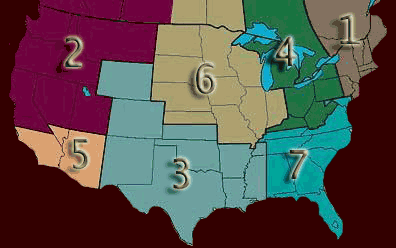

| Kitten | cats four to eight month of age |
| Championship | whole cats older than eight month |
| Primiership | altered cats older than eight month |
| Hoshold Pets | unregistered, non-purebred cats older than four month, altered if a cat is over eight month of age |
All purebred cats entered must be registered in CFA. A kitten may be entered without a registration number, but must have a number by the show date.
CFA does not allow declawed or otherwise surgically altered except spay and neuter surgeries.
The claws of all paws must be clipped before judging starts.
CFA shows may be held over two days, Saturday and Sunday, or on one day, Sunday or Saturday, featuring six or eight judging rings. There are two types of rings. Judges in all-breed (AB) rings evaluate cats of all breeds against each other. Specialty (SP) rings evaluate the shorthaired breeds and longhaired breeds separately. Abbreviation "AB" next to a judge's name means that judge is going to judge an all-breed ring, "LH" - longhair, "SH" - shorthaired specialty ring, and "HHP" in the listing means that household pets will also be judged.
The entry form requires the cat's registered name, registration number, the names of its sire and dam, color class.
Color classes for Burmese cats:
| Sable female | 0401 |
| Sable male | 0400 |
| Dilute female | 0403 |
| Dilute male | 0402 |
A "P" is added for Premiership classes, and a "K" is added for Kitten classes. For example, the class for a Dilute neuter is 0406P, and for a sable female's kitten is 0401K.
The show flyer which you can receive with your mailed confirmation, print from CFA web site, if available, or request from show manager by phone, E-Mail or regular mail, will give you most of the information about the show, including the fees, judges names, the dates and times of the show.
The cages and litter are provided at all shows. The liter provided is clumping clay liter most of the time. I always buy crystal liter for cat show, because it's less dusty and does not ruin cat's coat if a cat decide to sleep in litter box. It is better to bring your own cat food and water to avoid possible stomach upsets. Also you will need a cat bed or blanket, food dishes, and disinfectant. You have o cover the cage provided with curtains if you do not bring your own cage, which you should declare in entry form as secure cage. If the show flyer does not list the measurements of the available cages, you could contact show manager and find out, so you can plan accordingly.
To prepare my Burmese for a show I clip it's nails short, and give a cat a bath with a conditioner two days before the show. Before going to judges I brush a cat with rubber brush, regular brush, and pet a cat with a sheep skin glove.
When you arrive at the show hall, you have to go to the check-in table first to get your catalog, show number and your benching information. Your cage and grooming space should be labeled with your last name, so you can walk down the row and look for your name.
When the judging is started the show clerk will call out show numbers and rings they have to go to. At most shows, numbers will be called out more than once. If you fail to bring your cat to the ring when your number is called, your cat will be marked absent in that ring. When you get to the ring, put your cat in the cage that has its number on it.
A judge examines all cats of a given breed and compare them against each other.
Premiership and Kitten judging is the same as in Championship judging, but the purple ribbons are not given.
Each judge chooses the cats he thinks were the best he has seen at that show and calls them back to his/her ring for final, champions and premiers separate.
Judging in the Household Pet (HHP) classes is different than in the purebred classes. Judges rate these cats on personality, health, and distinctive appearance. Household Pets have their finals rings, too.
All cats in Championship and Premiership without any CFA title enter their first show in the Open class. Cats in the Open category compete against one another. Only one male and one female in each breed and color class may receive a winners ribbon. After they earn six winners ribbons, they obtain either Champion or Premier title. Now they can be shown in Champion class to collect Grand points. A cat who gets a brown or orange ribbon, or called for final earns Regional/National points for each other cat of its breed that it has beaten.
Bermuda, Canada (East of the 77th meridian), Connecticut, Delaware, Maine, Massachusetts, New Hampshire, New Jersey, New York (East of the 77th meridian), Pennsylvania (East of the 77th meridian), Rhode Island and Vermont
Alaska, California (North of the 36th parallel), Canada (West of the Western border of Manitoba), Idaho, Montana, Nevada (North of the 37th parallel), Oregon, Utah and Washington
Arkansas, Colorado, Kansas (South of the 38th parallel), Louisiana, Mississippi, New Mexico, Oklahoma, Tennessee (West of the Tennessee River), Texas and Wyoming
Canada (East of the 90th meridian and West of the 77th meridian), Kentucky (North of the 38th parallel), Michigan, New York (West of the 77th meridian), Ohio, Pennsylvania (West of the 77th meridian), and West Virginia
Arizona, California (South of the 36th parallel), Hawaii, Nevada(South of the 37th parallel)
Canada (East of the Western border of Manitoba and West of the 90thmeridian), Illinois, Indiana, Iowa, Kansas (North of the 38thparallel), Minnesota, Missouri, Nebraska, North Dakota, South Dakota and Wisconsin
Alabama, District of Columbia, Florida, Georgia, Kentucky (South of the 38th parallel), Maryland, North Carolina, Puerto Rico, South Carolina, Tennessee (East of the Tennessee River), the U.S. Virgin Islands and Virginia.
